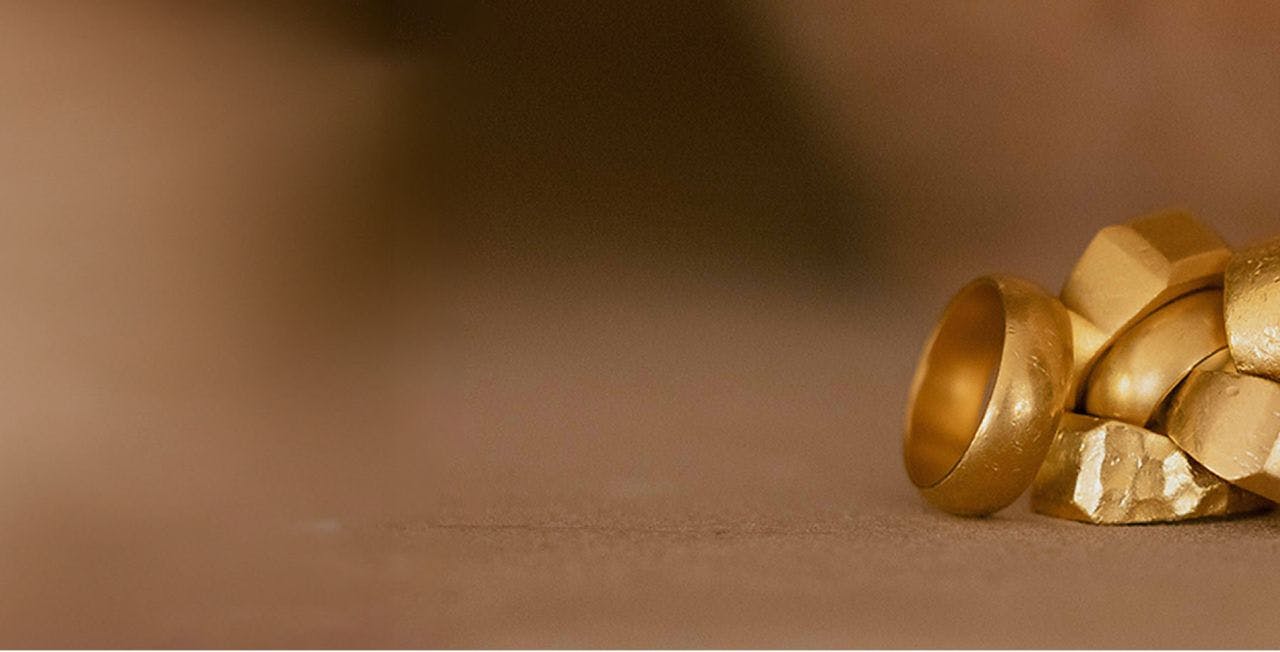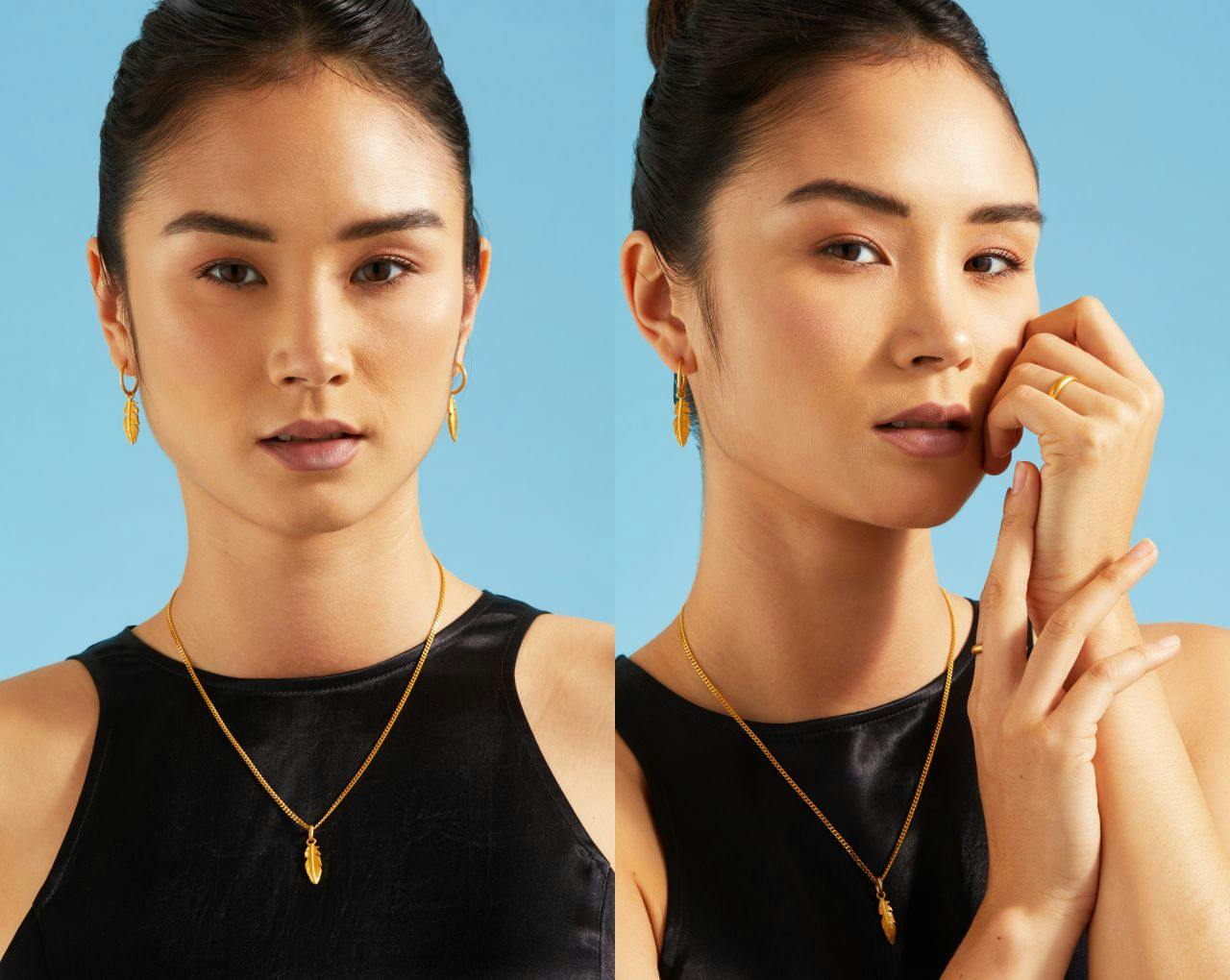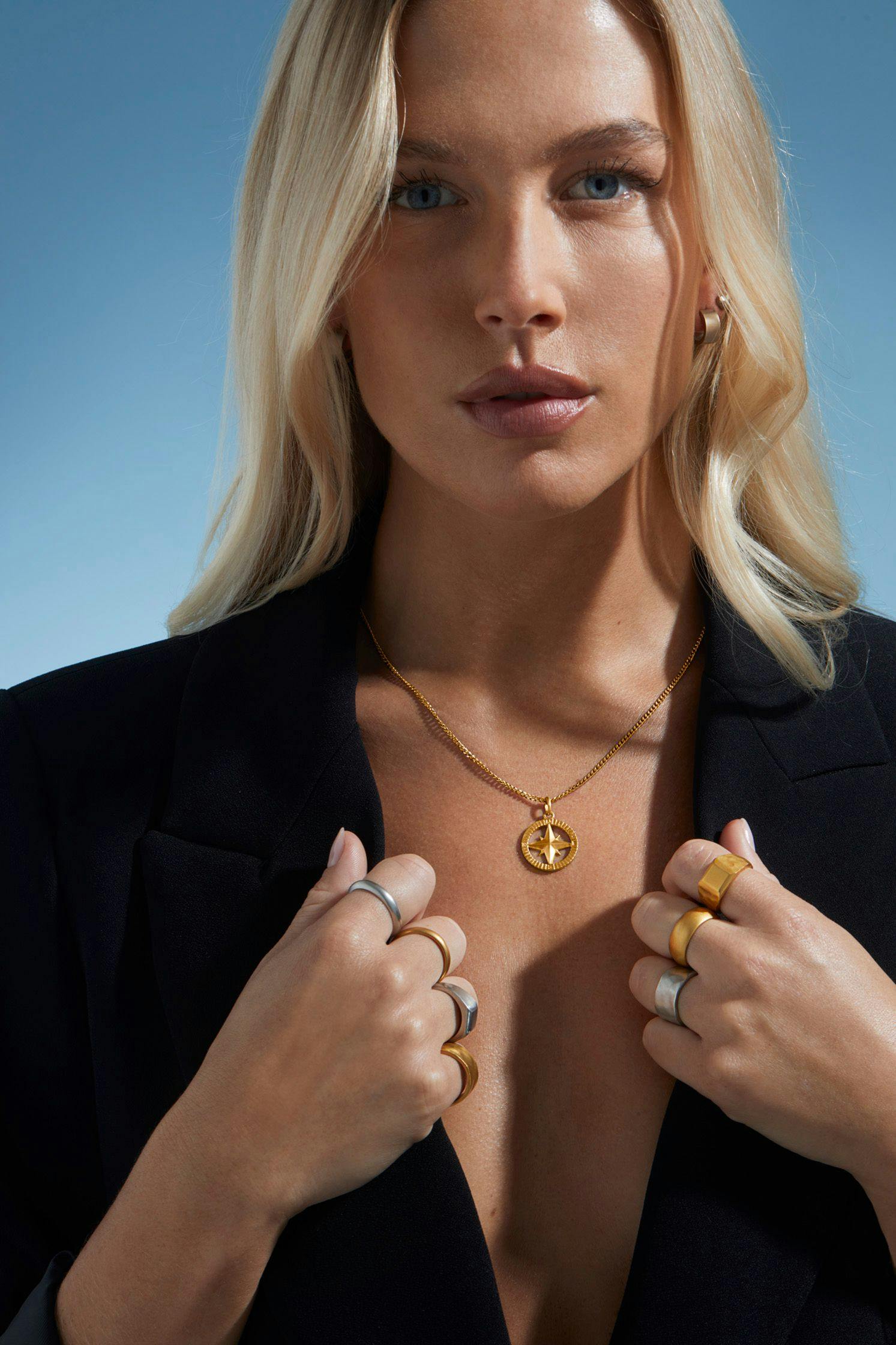Given the thousands of year’s worth of stories about metals and gemstones, it's no wonder that there are some jewellery myths which continue to pervade our shared understanding of the topic.
To set the record straight, we're here to assist in debunking these myths so that you, too, can be a jewellery expert.
Here, we share some tips with you that will help you better care for your existing jewellery and fill you in on some of the dos and don’ts of buying jewellery as an investment. We hope that you’ll be better informed about every aspect of shopping and caring for jewellery.
So, let’s begin with the first of these common jewellery myths.
Jewellery can't be made of 24-karat gold
Ever heard someone say, “pure, 24-karat gold is too soft to be used in jewellery”? Well, they’d be wrong.
Gold is often alloyed with other metals to make it harder due to the fact that pure 24-karat gold is softer by its nature. However, although pure 24-karat gold is more malleable, it is also indestructible. This attribute means it’s more than suitable for use in high-end investment jewellery.
Despite this, the most popular composites for gold jewellery are 18-karat (75% gold), 14-karat (58.5% gold), and 10-karat (42% gold). Cynically, this is because it's easier for jewellers to work with and allows for them to make a greater profit.
What’s more, alloying gold with other metals means jewellers can charge more for “solid gold” jewellery, when in reality, the jewellery contains a mixture of gold and other metals.
Diluting the gold content allows jewellers to work on higher profit margins because they can sell "gold" jewellery pieces without having to actually invest in pure gold, which is much more expensive to acquire.
Despite the misconception, 24-karat gold is still used in high-quality jewellery. Using pure gold results in the jewellery better reflecting the metal's real value, making it a more suitable investment.
Although rare, 24-karat gold jewellery is the most desirable – simply because it is gold in its purest form. It is one of the best ways to invest your money in jewellery, as there is no resale value lost due to impurities or cheaper materials in the mix.
On top of this, you know exactly what you’re paying for: 99.9% pure gold. This doesn't mean you need to spend more when buying 24-karat gold jewellery - 7879 jewellery is transparently priced so you are actually buying a higher quaility piece for a fraction of the price. Whatsmore you get more bang for your buck in the form of a beautiful piece that doubles up as an investment.
The best way to verify the quality of your gold is by checking the hallmark and by sourcing it from a reputable retailer that offers certification. Reputable sources will be upfront about the karat of the gold and will provide you with a certificate of authenticity.
In addition to the industry standard, at 7879, we also offer a lifetime warranty, meaning your jewellery can simply be swapped out if you experience any issues with it. With that in mind, you should have absolutely no concerns about the softer nature of your 24-karat gold. We've got you covered.
Gold comes in many different colours
One of the most widespread gold myths is that gold can come in different colours. While it is possible to buy white or rose gold, gold in its purest form will always be yellow.
Because of gold's softness and high value, however, it is quite common for metallurgists to mix in other (often coloured) alloy metals to increase the metal's hardness, change its colour, and reduce its cost. Once strengthened with these alloys, the gold jewellery is less prone to scratching, warping, or any other issues that could cause long-term damage.
Yellow gold is used as the base for both rose and white gold, which are then combined with additional metals that change the colour of the product. To create rose gold, metallurgists combine pure gold with copper, and to create white gold, pure gold is combined with nickel, silver, or palladium.
With this in mind, we now know that the only colour pure 24-karat gold can be is… gold!
You can tell if a piece of jewellery is made of real gold by biting it
Although one of the more humorous jewellery misconceptions, there is actually a small amount of truth to this. When you bite pure, high-quality gold, you will leave an imprint on it, and the purer the gold, the softer it will be.
Although this myth rings true, we absolutely would not recommend biting your jewellery, as you could do damage to your teeth as well as your valuables.
While gold is soft enough that human teeth can technically leave a mark, there are also similarly soft metals, and this method will not help you distinguish gold from these. Unscrupulous people have been known to plate lead with gold, creating a lookalike product that is just as soft as the real deal.
On top of this, fake jewellery can also be toxic if it contains harmful ingredients such as lead.
Biting your jewellery is bound to make for an embarrassing story for a friend, dentist, or doctor. So, at the end of the day, you can save both your teeth and dignity by sourcing your gold from a reputable source, complete with certification.
Jewellery cannot provide returns in the long term
It’s very important to understand here that jewellery and investment are not mutually exclusive subjects. In fact, 24-karat gold has appreciated 580% over the last 20 years. In comparison, the S&P 500 Index has only appreciated 160% over that same time period.
Gold can be a sound investment vehicle generally, but investing in gold as jewellery has the added perk of allowing investors to look good in their 24-karat gold jewellery. Pure gold jewellery might be more expensive than a gold bar because of the manufacturing costs, but they both appreciate in value in the exact same way.
Unlike chunky gold bars, investors in 24-karat gold jewellery can enjoy wearing their jewellery every day, unlike the gold bars, which are usually kept hidden and locked away.
What 24-karat bars and 24-karat jewellery do have in common, however, is their ability to be traded in for their market value at any time. With this in mind, you can treat your 7879 jewellery as a true asset and can even monitor its value in real-time.
Fine Jewellery retains its value in metal and gemstones
Fine jewellery often has high markups due to factors such as marketing, brand value, and storefront costs. Even though fine-jewellery gold is of lower purity and is worth less than investment jewellery, it can often cost more.
Brushing aside all of the hype behind the marketing and brand value, it’s important to acknowledge that fine jewellery actually loses most of its value immediately after purchase.
This is the big trap of the jewellery industry, and one that is easily avoided. The secret is to focus on the quality of the material over the brand that it carries because this is where you actually want to invest your money.
Investment jewellery such as 24-karat gold is more reflective of the metal's true value. Because you’re investing in 24-karat gold and pure platinum, you know that your piece is worth exactly its weight in gold or platinum.
With that in mind, you’re able to track the exact value of your jewellery based on its weight and the current market value.
White gold resists wear and tear better than yellow gold or platinum
White gold jewellery has earned a reputation as a durable jewellery option due to the fact that it typically gets a hardy rhodium plating during production.
Although this rhodium plating does manage to enhance the jewellery’s durability, it wears off after 6 months to two years, depending on the thickness of the application. This means that if you wear a rhodium-plated white gold ring or other white gold jewellery, you will, unfortunately, need to have it plated periodically.
This process can prove to be an expensive and time-consuming liability.
Alternatively, you can purchase white gold that is a 14-karat nickel alloy or a 14-karat/18-karat palladium alloy. At the end of the day, though, white gold is still prone to scratches, just as pure, yellow gold is.
If you are looking for a white metal that will not wear down so quickly, you’re best off opting for pure platinum jewellery.
Platinum has a great reputation for being tougher than white gold, as it wears down more slowly. As opposed to other precious metals, which can scratch easily upon heavy contact, platinum holds its shape much better. This results in the metal not shedding any mass, and therefore not losing any value. Instead, it tends to reshape rather than break much as putty does.
Platinum is also naturally white, with a beautiful sheen that will not wear off in the same way that it does with white gold.
Had you been taken in by any of these jewellery misconceptions? That’s nothing to be ashamed of. Learn more about investing in jewellery to make sure you dispel all those myths and understand the truth about jewellery.








